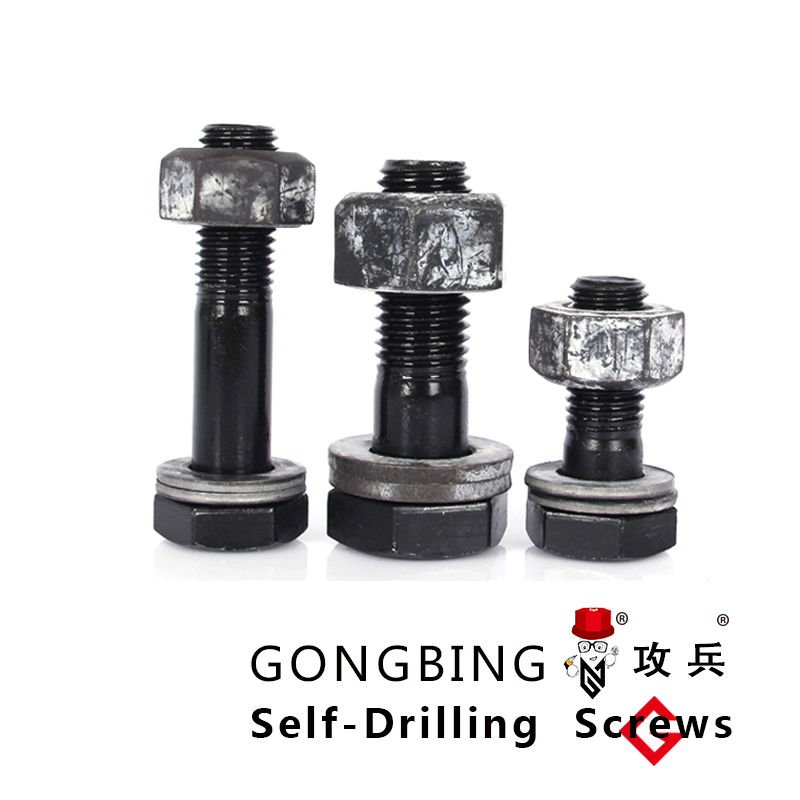shear stud detail
Understanding Shear Stud Detail in Structural Engineering
Shear studs are an integral part of modern structural engineering, especially in the construction of composite steel and concrete structures. Their primary function is to ensure a robust connection between the concrete slab and the steel beams, allowing them to act together effectively under loads. This article will delve into the importance of shear studs, their design details, and installation considerations.
What Are Shear Studs?
Shear studs, often referred to as headed shear studs, are typically made from high-strength steel and are welded onto the top flange of steel beams. These studs protrude into the concrete slab, providing a mechanical bond that transfers shear forces between the concrete and steel. This bond is crucial for the composite action that enhances the overall structural performance, efficiency, and load-carrying capacity of the system.
Importance of Shear Studs
The significance of shear studs cannot be overstated. When a composite beam is subjected to bending moments, the concrete slab resists compression while the steel beam resists tension. Without shear studs, the two materials would act independently, leading to reduced load capacities and potentially unsafe structures. By using shear studs, engineers can design structures to be lighter, more cost-effective, and with improved fire resistance and overall durability.
Design Considerations
The design of shear studs involves several critical factors, including the shear strength, the spacing between studs, and the size of the studs themselves. The American Institute of Steel Construction (AISC) provides guidelines that offer detailed recommendations for the design and placement of shear studs. The typical diameter of shear studs ranges from 3/4 inch to 1 inch, with length varying based on the required embedment depth in the concrete.
shear stud detail

When determining spacing, engineers must consider factors such as the anticipated loads, slab thickness, and overall geometry of the beam. It is common practice to space shear studs at intervals of 12 to 36 inches along the length of the beam, although specific project requirements can necessitate adjustments.
Additionally, shear studs must be placed in a manner that takes into account the flow of loads within the structure. Areas experiencing higher shear forces, such as near supports, may require closer spacing or larger stud sizes to ensure adequate load transfer.
Installation Practices
Proper installation of shear studs is essential for ensuring their effectiveness. The studs are typically welded to the beam using special welding techniques designed to ensure strong joints. The process must be executed in accordance with established specifications to avoid issues such as poor weld quality or misalignment.
Before the concrete is poured, it is also important to verify that the studs are securely in place and that the beam is adequately prepared to receive the concrete. Proper alignment is critical; misalignment can lead to ineffective load transfer and potential structural failures.
Conclusion
In summary, shear studs play a pivotal role in the integrity and efficiency of composite structural systems. Their design and installation require careful consideration of various factors to ensure optimal performance. As construction techniques continue to evolve, the importance of shear stud details will only increase, as they remain fundamental to achieving safe, reliable, and economical structures. By understanding the nuances surrounding shear studs, engineers can optimize their designs to meet the ever-growing demands of modern construction.
-
Weatherproof Plastic Expansion Anchors for OutdoorNewsJun.06,2025
-
Sustainability in the Supply Chain: Eco-Friendly TEK Screws ProductionNewsJun.06,2025
-
Load-Bearing Capacity of External Insulation FixingsNewsJun.06,2025
-
Double Head Bolts: Enhancing Efficiency in Industrial MachineryNewsJun.06,2025
-
Corrosion Resistance in Chipboard Screws: Coatings for Wholesale DurabilityNewsJun.06,2025
-
Butterfly Toggle Bolts : Enhancing Structural ResilienceNewsJun.06,2025
